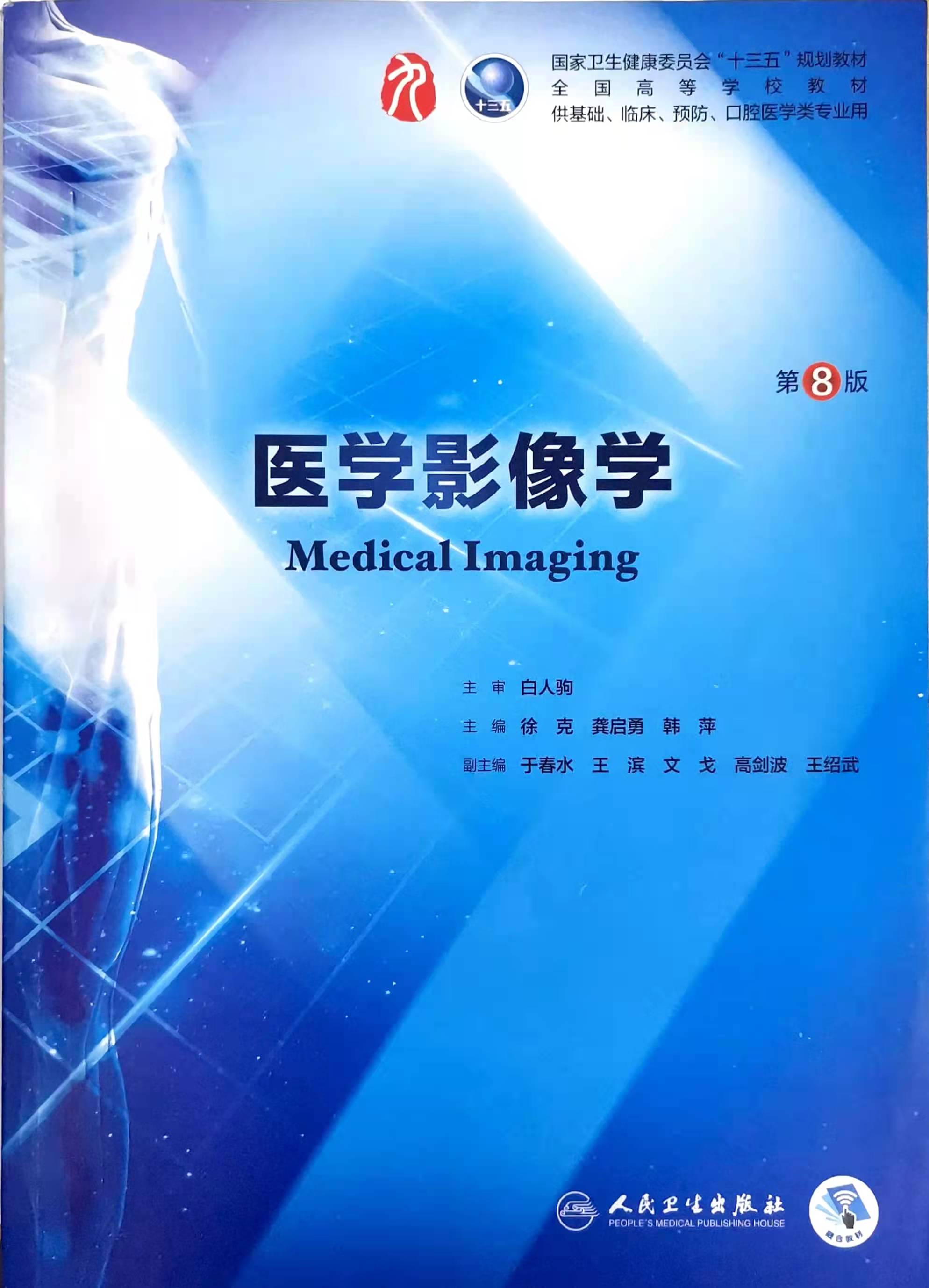
National Health Lecturing Committee "Thirteenth Five-Year Plan" Planning Textbook
National Higher Education Textbook
For basic, clinical, preventive, dental medicine majors.
Medical Imaging (8th edition)
Editors in Chief: Ke Xu, Qiyong Gong, Ping Han
Press: People’s Medical Publishing House
Publication Time: 2019-01
Perface:
The revision work of the new five-year plan undergraduate clinical medicine professional planning textbook coincides with the successful convening of the 19th National Congress of the Communist Party of China. In order to adapt to the requirements of deepening the reform of medical education and health system, we have carefully organized the revision of the 8th edition (Medical Imaging). The textbook is guided by the spirit of the "National College Ideological and Political Work Conference" and the "First Plenary Session of the National Textbook Committee", in accordance with the opinions on deepening the cooperation between medical and education and the reform of clinical medical talent cultivation system, and the guidance on establishing standardized training system for resident doctors. After careful discussions by editors in chief and editorial board members, based on inheriting the achievements of the 7th edition of Medical Imaging and comprehensively summarizing the feedback opinions of the textbook, further following the principles of "three basics", "five characteristics", and "three specificities" of the textbook, the 8th edition (Medical Imaging) has been comprehensively and carefully revised to ensure that it has the following characteristics:
1. Pertinence: The textbook targets undergraduates as the main readers and can also be used as an important reference book for standardized resident doctors’ training. It insists on the aim of following the basic theories, basic knowledge, basic skills, and specific objects, specific requirements, and specific limitations.
2. Advancement: Fully utilizes the distinctive features of digital resources of "massiveness, digitalization, and three-dimensionality", updates and adds a large number of slides, cases, and pictures as digital resources integrated into the textbook, enhances the pertinence and advancement of imaging teaching, and deepens students' understanding of theoretical knowledge in various ways. At the same time, the revised "Study Guide and Exercise Set" has further improved the interactivity of assisting in learning.
3. Cutting-Edge: It accurately and moderately reflects the progress of imaging. The first chapter adds a section on contrast agents to help students systematically understand the principles, types, properties, common adverse reactions, and coping measures of various commonly used clinical contrast agents. A moderate amount of nuclear medicine content has been added to the "molecular imaging" section to help students fully understand the equipment and technology of molecular imaging and deepen their outlook on its application prospects. The eleventh chapter on "infectious diseases" has been added to briefly introduce the relevant images of new common infectious diseases such as HIV and influenza to make up for the deficiency of the previous edition of the textbook in this regard.
4. Authority: According to the suggestions of the NPPPCC and the People's Health Publishing House on the textbook writing team, while retaining most of the editorial board members of the 7th edition, this edition further includes academic authoritative experts and professors in the writing and broadens the participating schools. In particular, Professor Haitao Ran, Vice Chairman of the Chinese Ultrasound Medical Engineering Association and Deputy Director of the China Ultrasound Physician Branch, was specially invited to compile the "Ultrasound Imaging" section of the general report and to review the ultrasound content throughout the textbook to ensure the professionalism and rigor of related contents.
This textbook has gone through eight editions and has been condensed from the hard work of several generations of participating experts. Here, we express our sincere respect to the editors in chief, deputy editors, and editorial teams of the 1st to 7th editions of the textbook represented by Professor Enhui Wu, and our sincere thanks to all the editorial board members of this edition for their rigorous scholarship and hard work. We would also like to thank Professor Lina Zhang, the writing secretary, for her enormous contribution to the writing and finalization of the textbook. At the same time, our sincere gratitude goes to the professors who have worked hard for this revision work, such as Qiang Yue, Guina Ma, Sirui Li, Peiqian Hu, Haibo Shao, Haiyan Sun, Peizhuo Zang, and Shicheng He!
In the revision of this edition, all the editors have done their best to follow the revision principles, but there may still be inadequate contents and arrangements. We sincerely invite all teachers, students, and readers to kindly point them out.